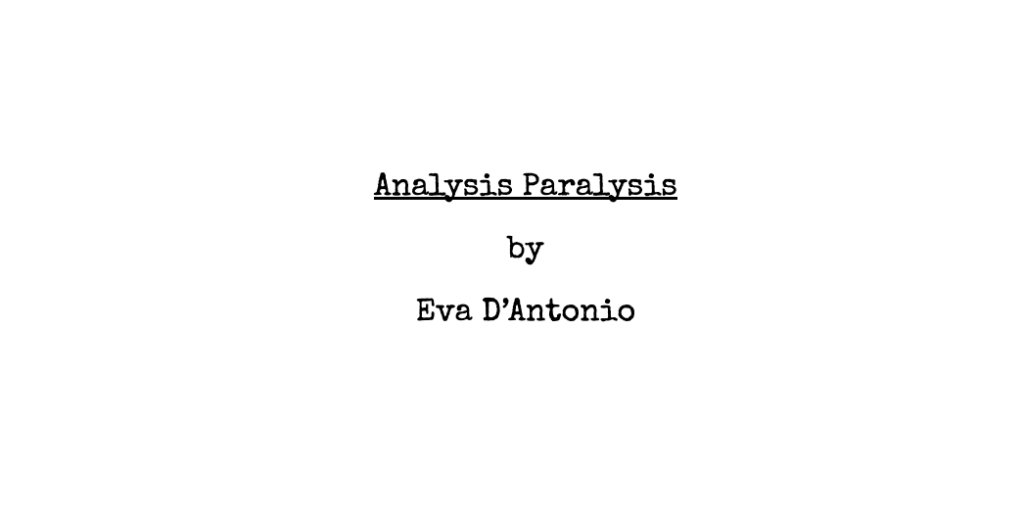Introduction
For our final junior project of the year we identified one skill that we wanted to improve upon. This could be learning how to do figure drawing, sculpting, or even learning a specific Illustrator or Photoshop skill. This was a short project so the deadlines came up fast and we had to be realistic with our choice.
I chose to learn about costume designing, more specifically, creating accurate garments that deities would wear. Since I couldn’t decide on which mythology to base my designs off of, I decided to do one design for Egyptian, one for Norse, and finally one for Roman. After deciding on which mythologies I would use, I researched a list of deities from each. This process took a great amount of time since there are vast amounts of gods that fall under each mythology and it’s extremely easy to get lost reading all the history and myths. When I was done learning about a great deal of gods, I finally landed on Anubis from Egyptian mythology, Ran from Norse mythology, and Venus from Roman mythology.
Research
To learn more about my chosen deities and their history, I conducted in-depth research all the way from learning about the emetology of their names, to the specific types of attire and textiles gods were known to wear.
Anubis (Egyptian Mythology)
Anubis is the Egyptian God of the Dead, protector of graves, and guide to the underworld. In ancient Egyptian religion, he is usually depicted as having a jackal head. Jackals were associated with death since they were known for lurking around cemeteries. Unlike most Egyptian gods having golden skin, Anubis’ skin is black. This represents the discoloration of the corpse after its treatment with substances during mummification. The color black also symbolized fertility and the possibility of rebirth in the afterlife. In many relics, Anubis sits atop the Nine Bows carved into a tomb, symbolizing his domination over the enemies of Egypt.
In my designs, Anubis is depicted wearing a shendyt (a kilt-like garment) made of linen. On his belt there are the symbols of the Nine Bows which stand for any nine enemies to Ancient Egypt. Anubis wears a striped head cloth called a ‘nemes’ which was worn by the rulers of Egypt. Around his neck is a golden usekh collar, a broad collar made of gold and jewels that were worn at the beginning of the 18th Dynasty.
Ran (Norse Mythology)
Ran is the Norse goddess/personification of the sea. The emetology of her name means theft or robbery. This is because she is known to capture sea-goers with her net, pulling them underwater and drowning them. The souls of the drowned then join her and Aegir, Ran’s husband, in their magnificent hall. Ran is associated with a common loon and an artic grayling.
In my designs, Ran is wearing a dark blue mermaid cut gown, representing the realm of the dead at the bottom of the sea to which people have drowned go. Since she is associated with a net, Ran’s top is made of fishing net bejeweled with treasures stolen from sea-goers. She is depicted wearing a net overskirt with the coloring of an artic graylings scales. Since she can appear in the form of a mermaid, her headpiece resembles mermaid ears.
Venus (Roman Mythology)
Venus is the Roman goddess of love, beauty, and desire. The name “Venus” was related to the Latin word venenum meaning “poison”, “charm”, or even “aphrodisiac”. She possesses the ability to make mortals and gods fall madly in love, while representing the multifaced sides of femininity without shame or reserve. Venus loves nothing more than the glitter of gold and the gleam of jewels. In art she is displayed in gardens, appropriate to the goddesses deep-rooted connections with fertility. Venus is associated with white roses and myrtle crowns. This is because white roses were a symbol of love, which brides would wear in their hair as a tribute to Venus and myrtle was thought to be a particularly potent aphrodisiac.
In my designs, Venus is wearing a pomegranate red dress embellished with an array of gold and jewels. I chose to color the dress pomegranate red because pomegranates are depicted in mythological paintings as tributes to Venus and the color red commonly symbolizes passion and desire. The skirt of the dress is made of a sheer pink organza which is frequently used for bridal wear and gowns. The dress has a high slit which adds a touch of flirtatiousness to the design, and shows off her golden wrap stiletto sandals. Around her waist is a gold encrusted white rose corset, matching her other undergarments. Atop Venus’ head sits a rhinestone covered myrtle crown, representing her as a symbol of love.
Process
After deciding what deities I would use, I took to Illustrator and created 3 mood boards representing the different aspects and styles I wanted to include for each. Once I had enough inspiration, I started making rough sketches of each gods garments. Since my project was focusing on costuming rather than figure drawing, I paid no attention to physical attributes that were a part of my research hoping my designs would represent each deity clearly. When I finished my sketches I uploaded them to Illustrator where I used the pen and brush tool to trace and add new aspects to my designs. In the end I stayed pretty close to my initial designs, only removing unnecessary features and making small final changes. When the lineart was completed I created a color palette for each god including colors that had real meaning in each mythology. This part surprisingly took a great amount of time since I wanted every color to serve a purpose. After all the colors were added I went in with the brush tool to add final details and used the texturizer tool on Illustrator to add textile textures.
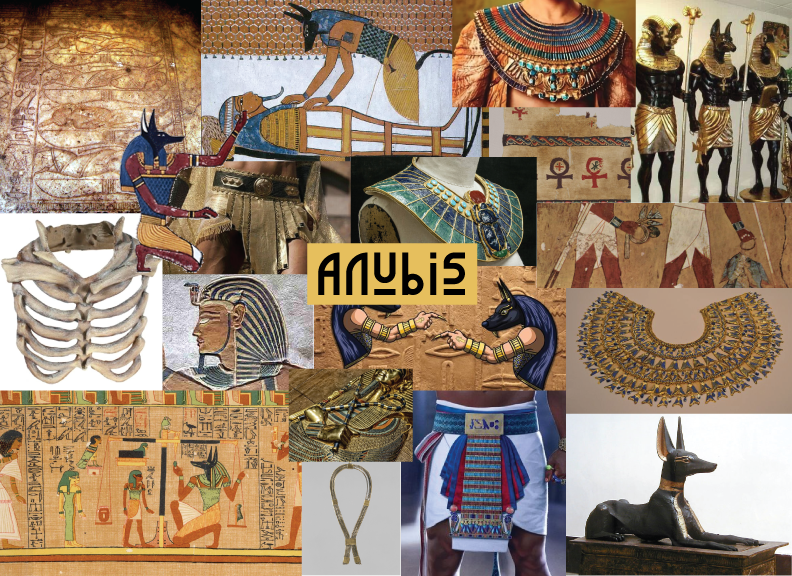
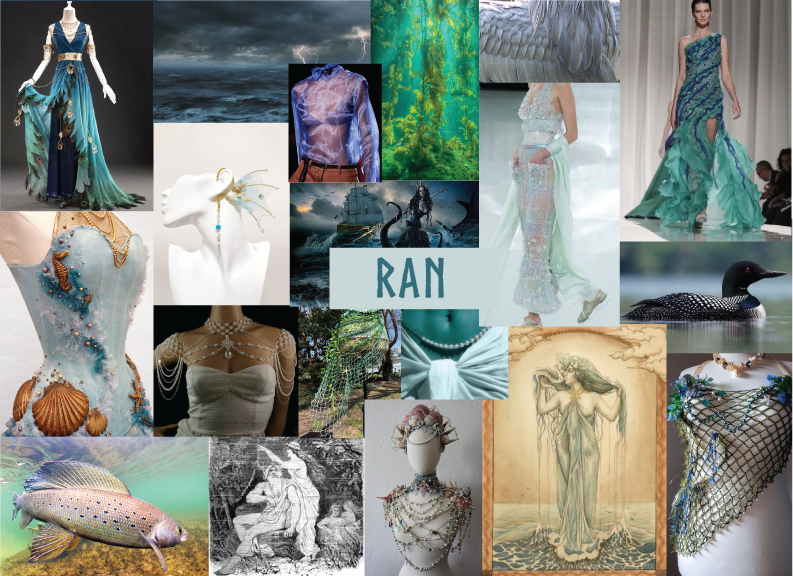
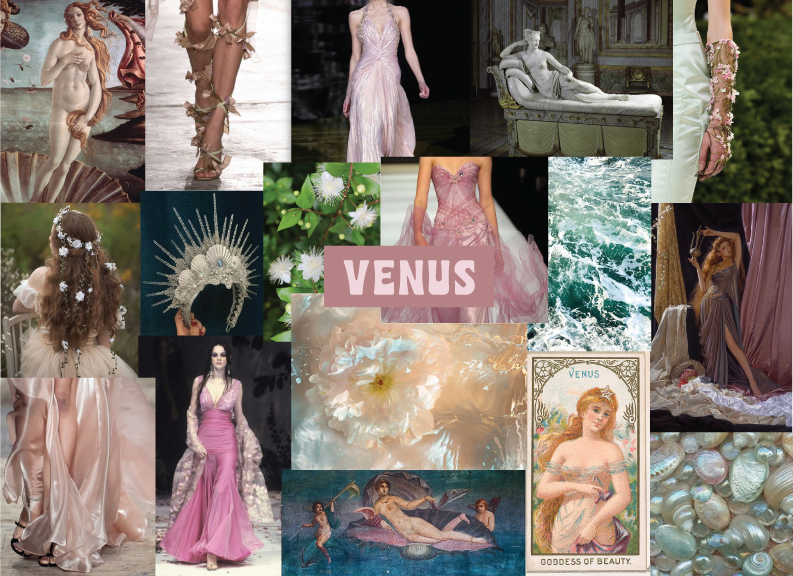



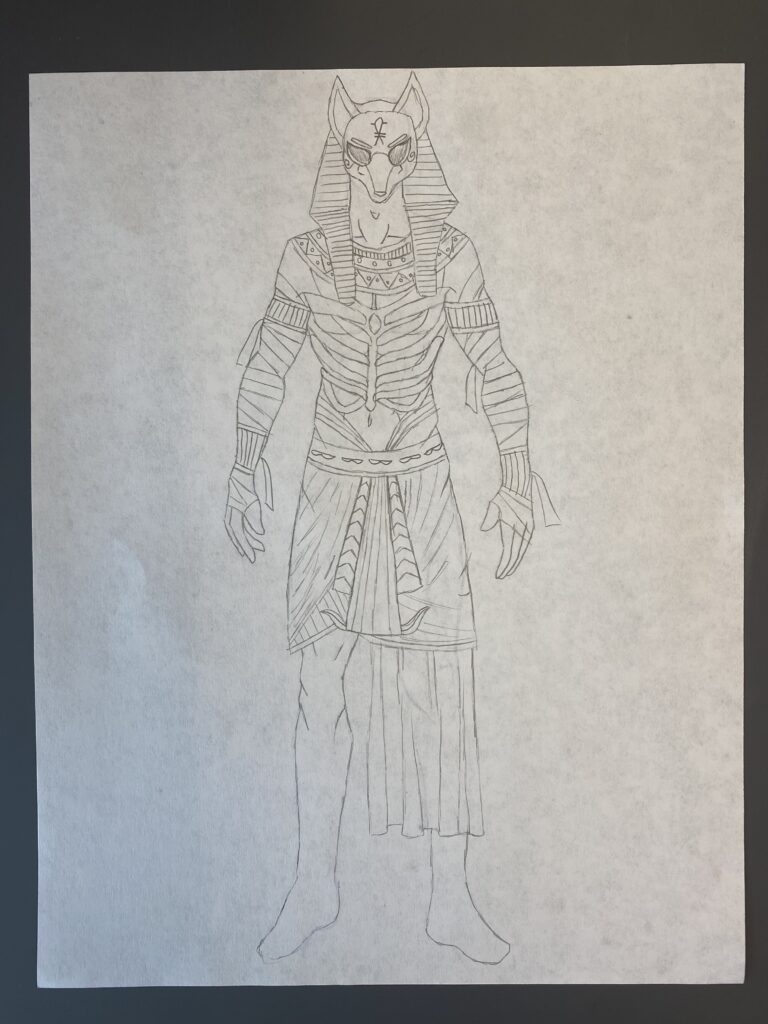
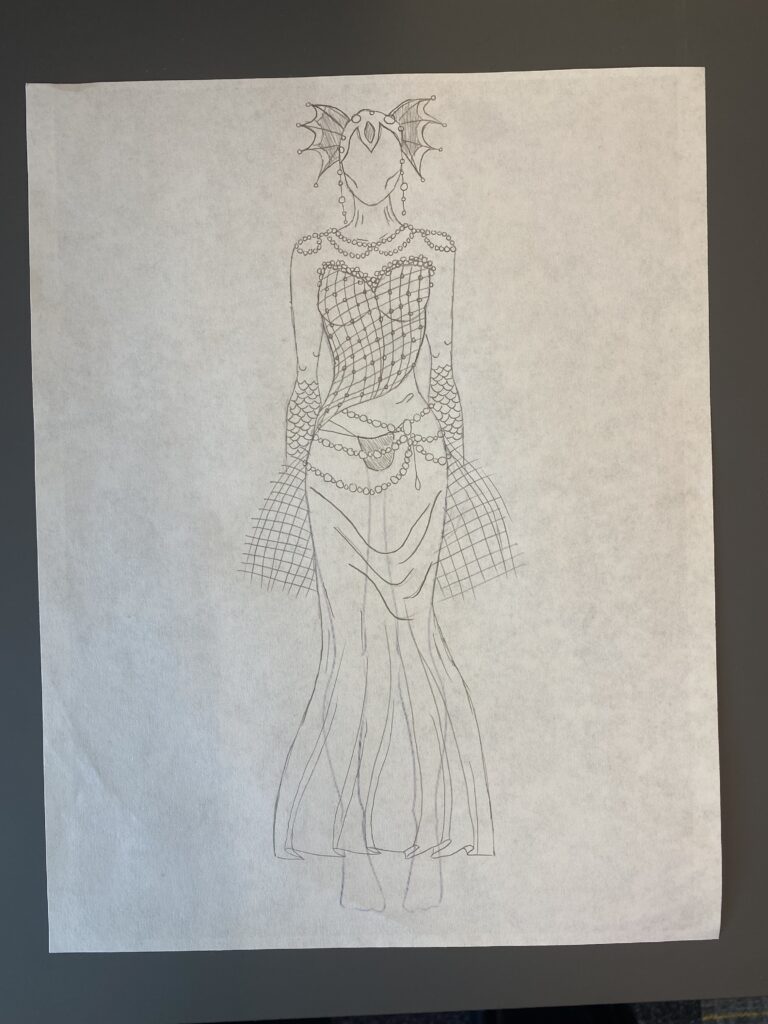
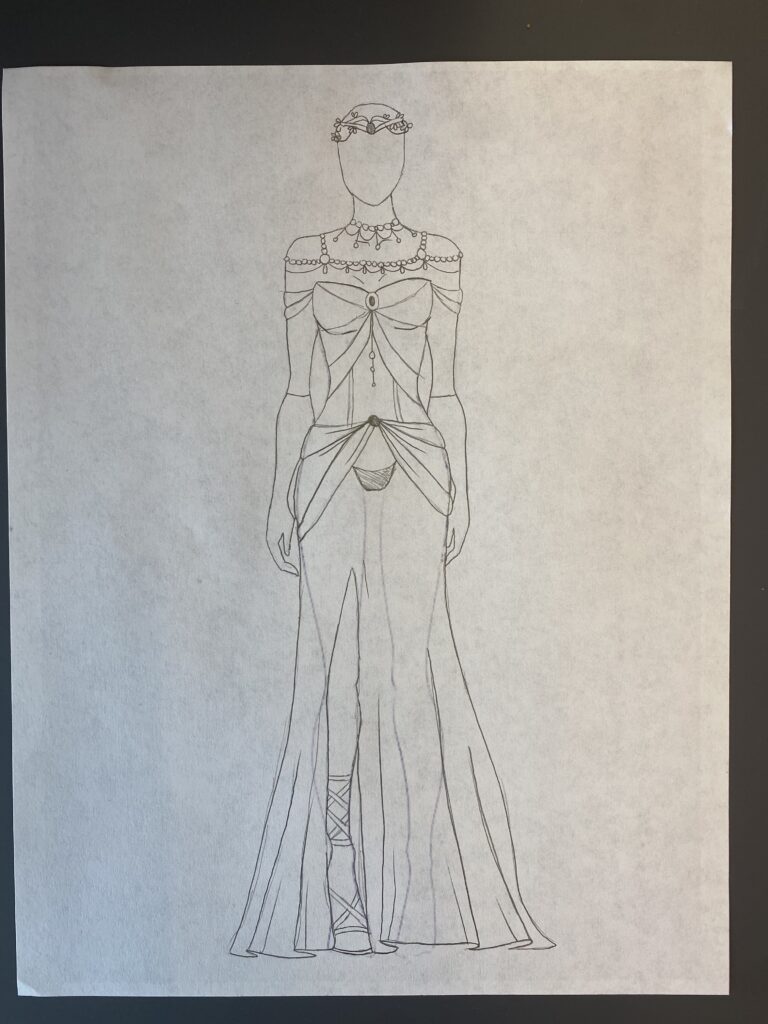
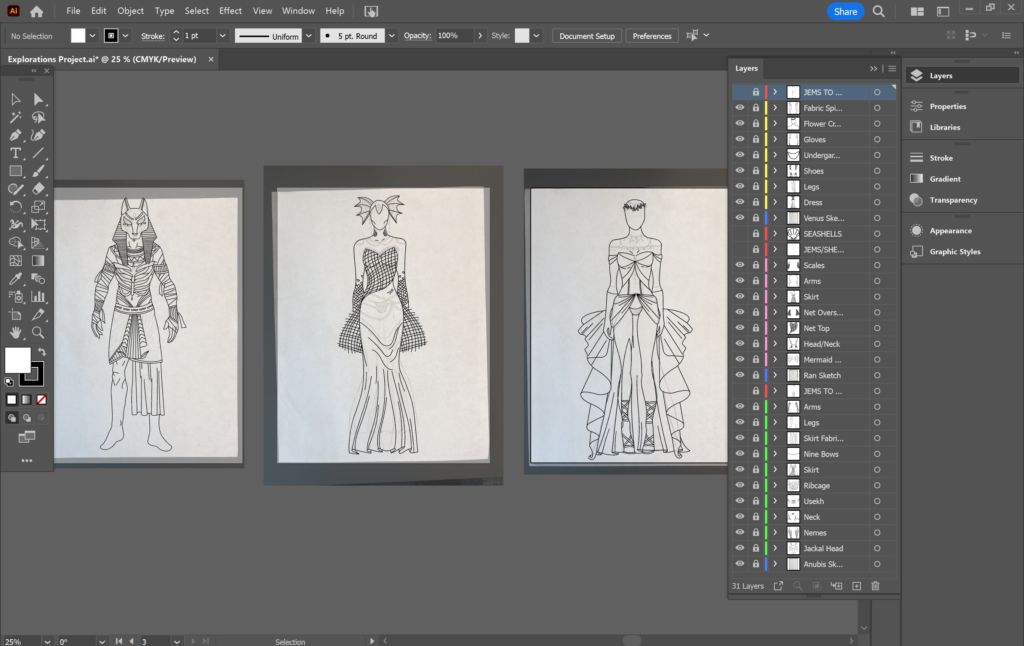
Final Production
Anubis
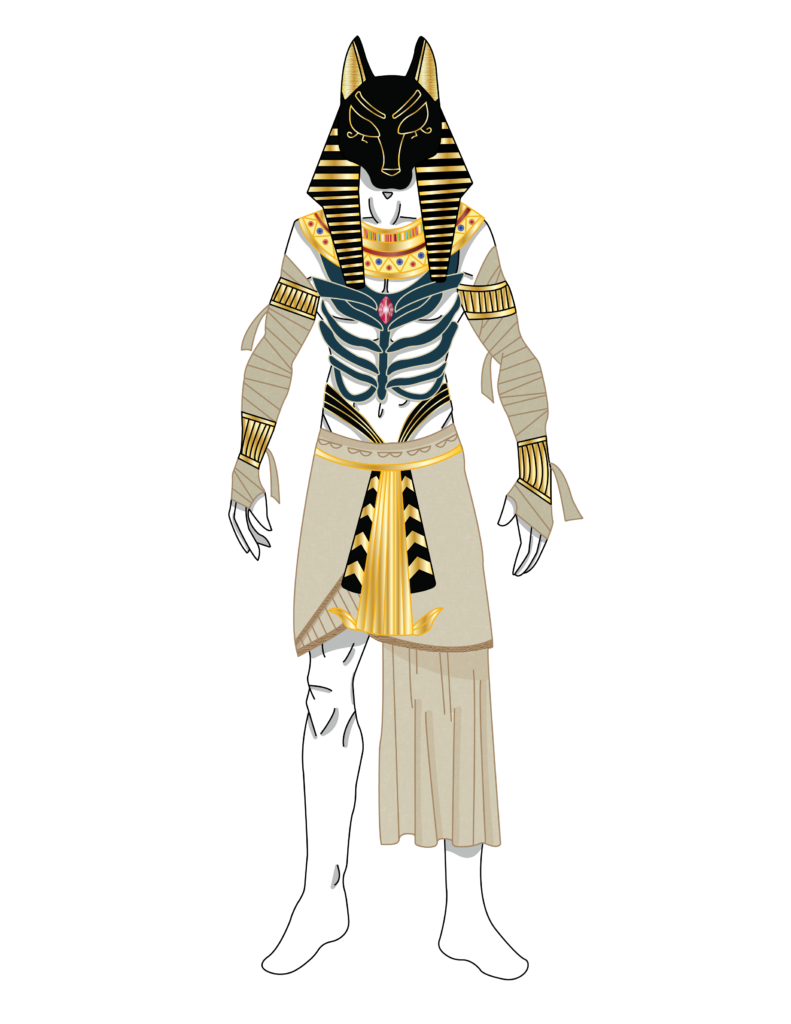


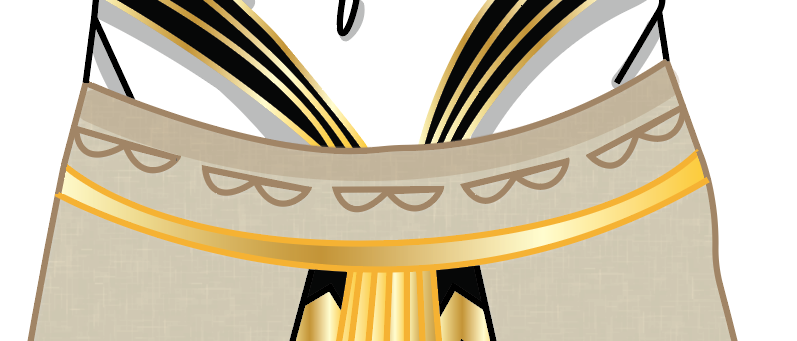
Ran
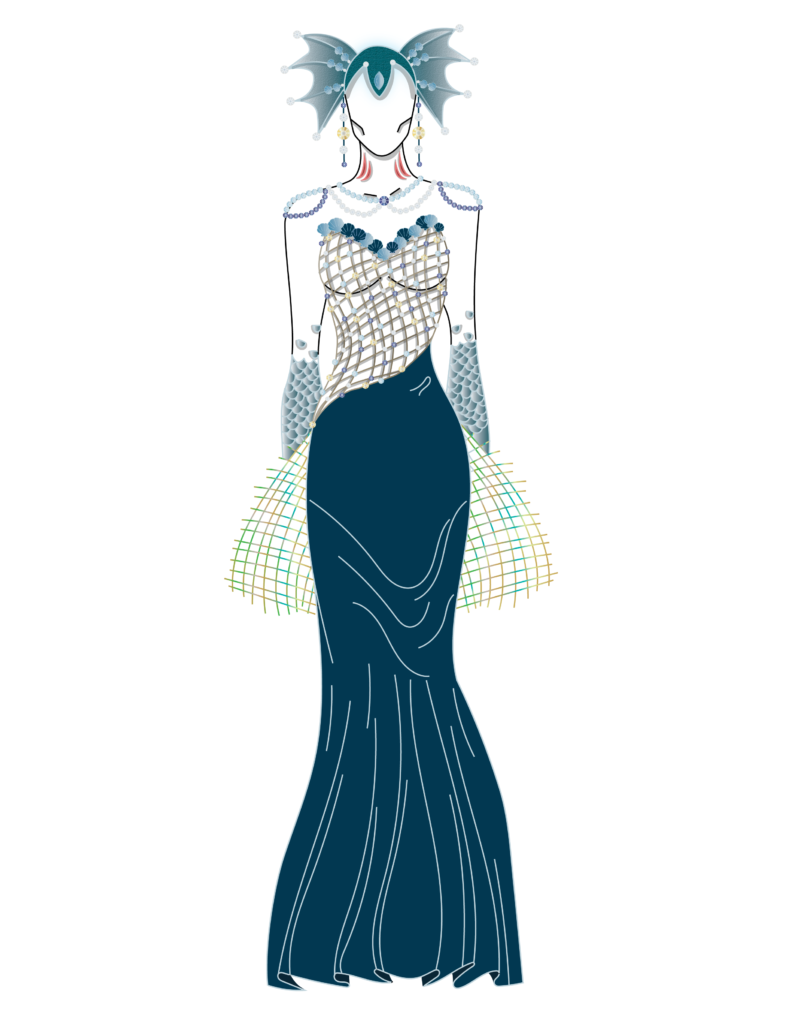

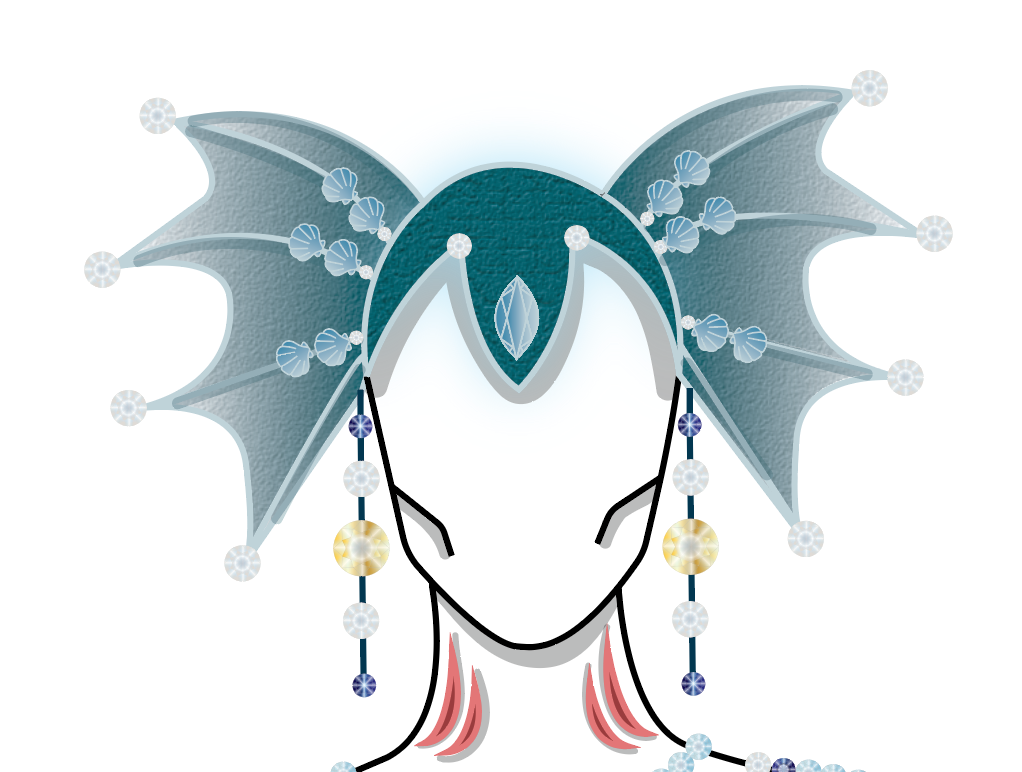
Venus
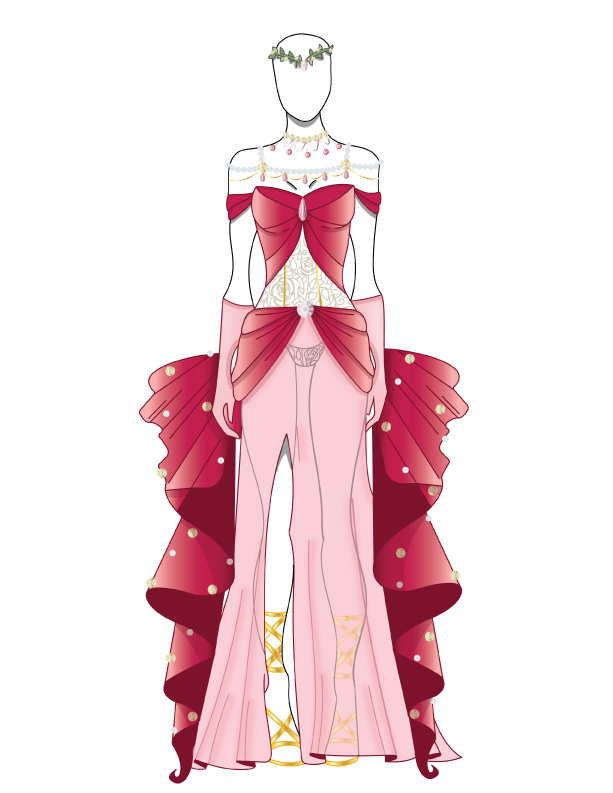
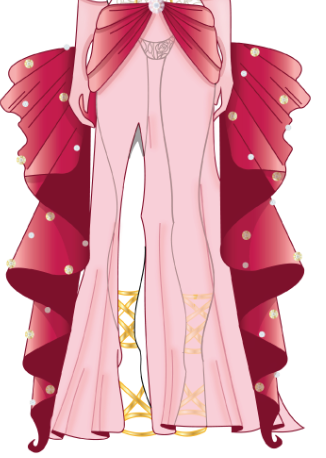
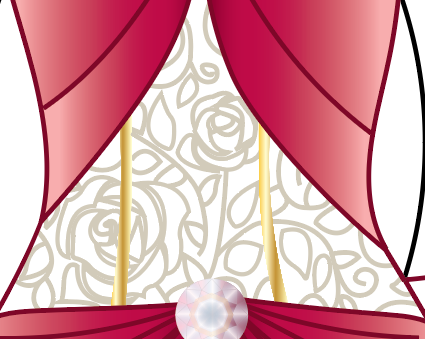
Reflection
Although there are a lot of aspects that I would change if I were to do this again, I am quite happy with how my Explorations Project turned out. I learned a lot about Illustrators capabilities and how to troubleshoot issues. There were quite a few times where I had to restart or I was drawing on the wrong layer, causing everything to get messed up. In the end I’m glad I stuck with using an Adobe program to do my designs, since I hope to primarily be able to use Illustrator for my future work. Overall, the Explorations Project has made me a better digital artist since I learned a lot of tricks and tips on how to improve my art in the future.
Lyrical Essay
